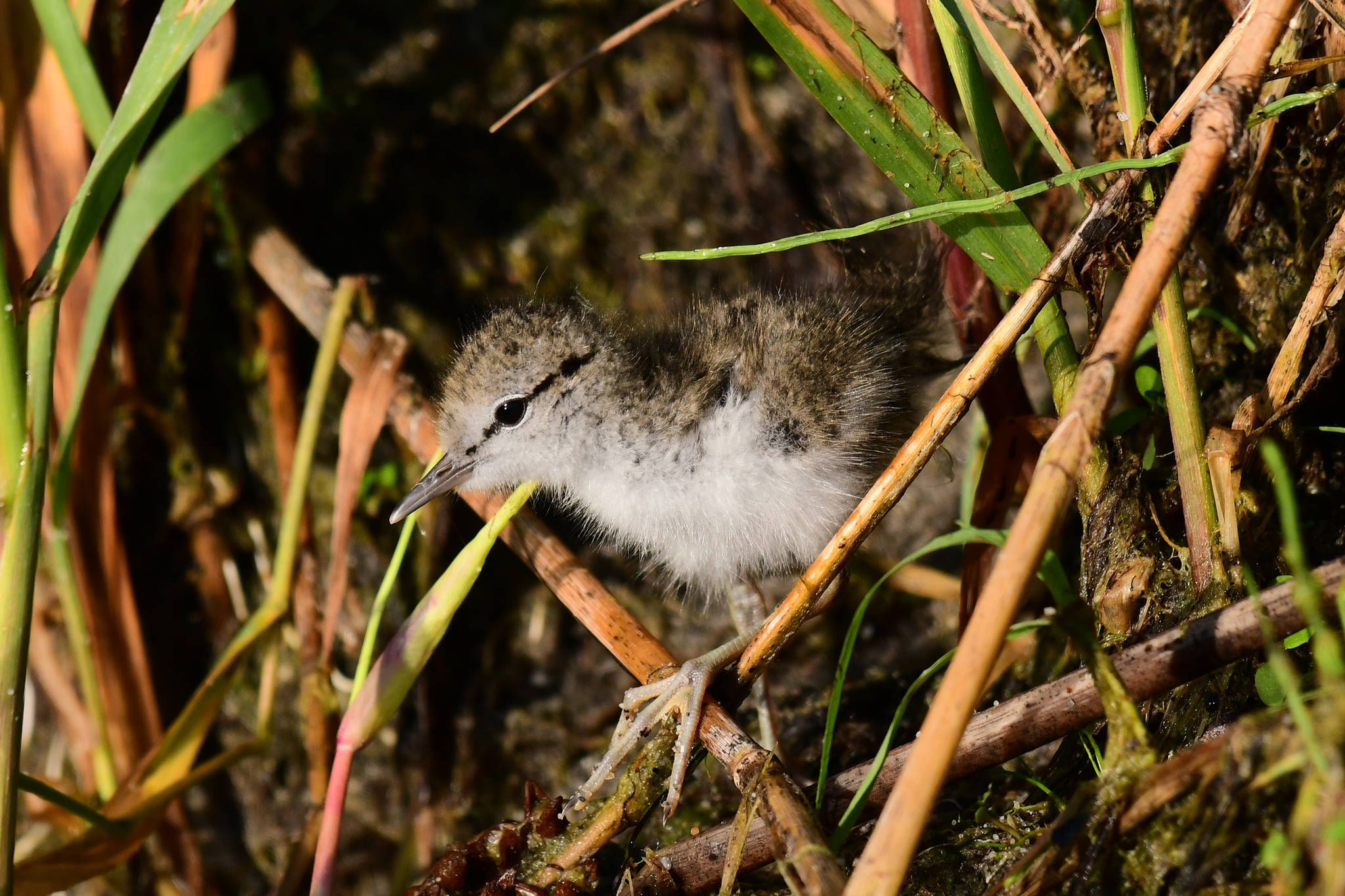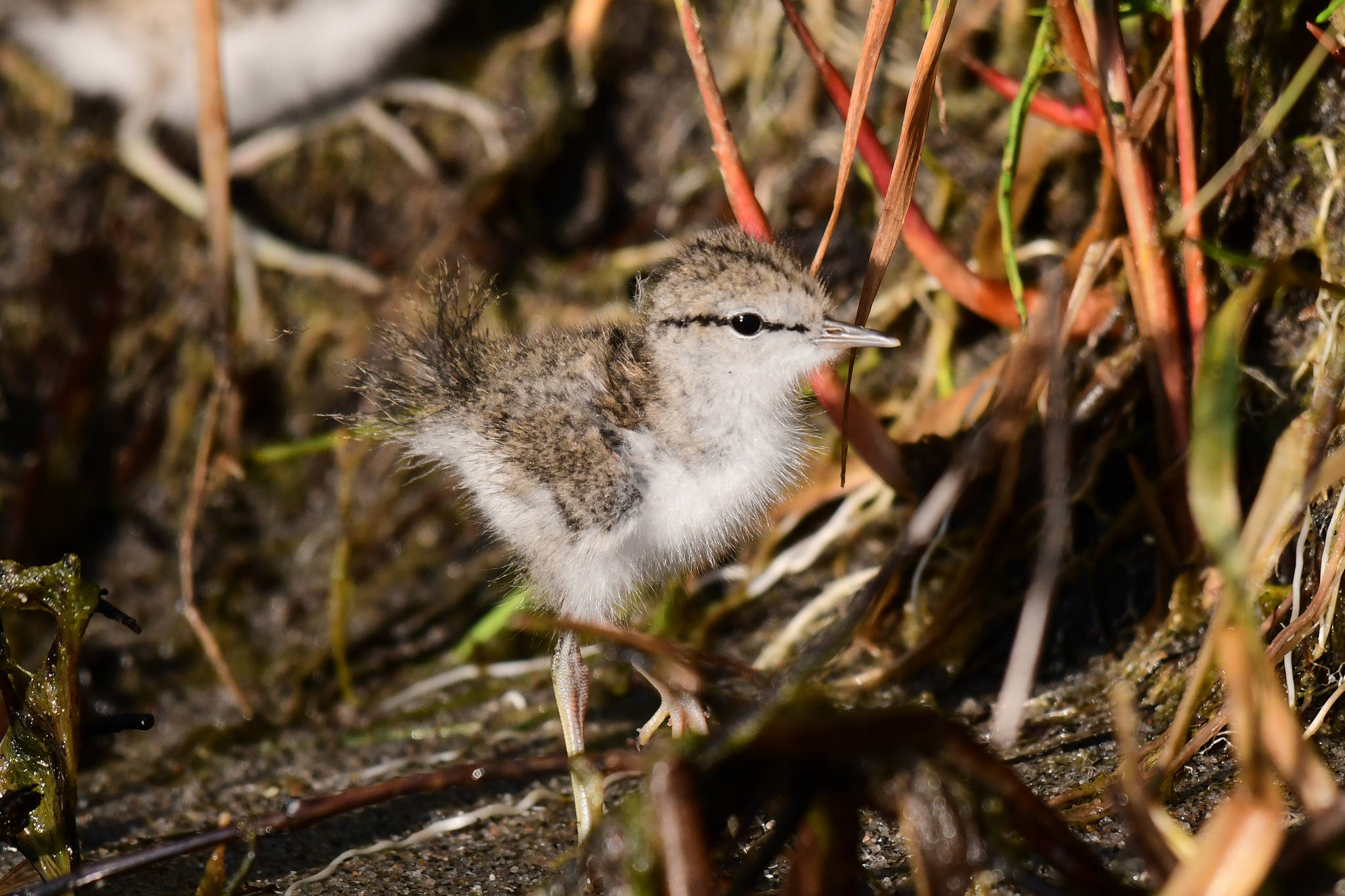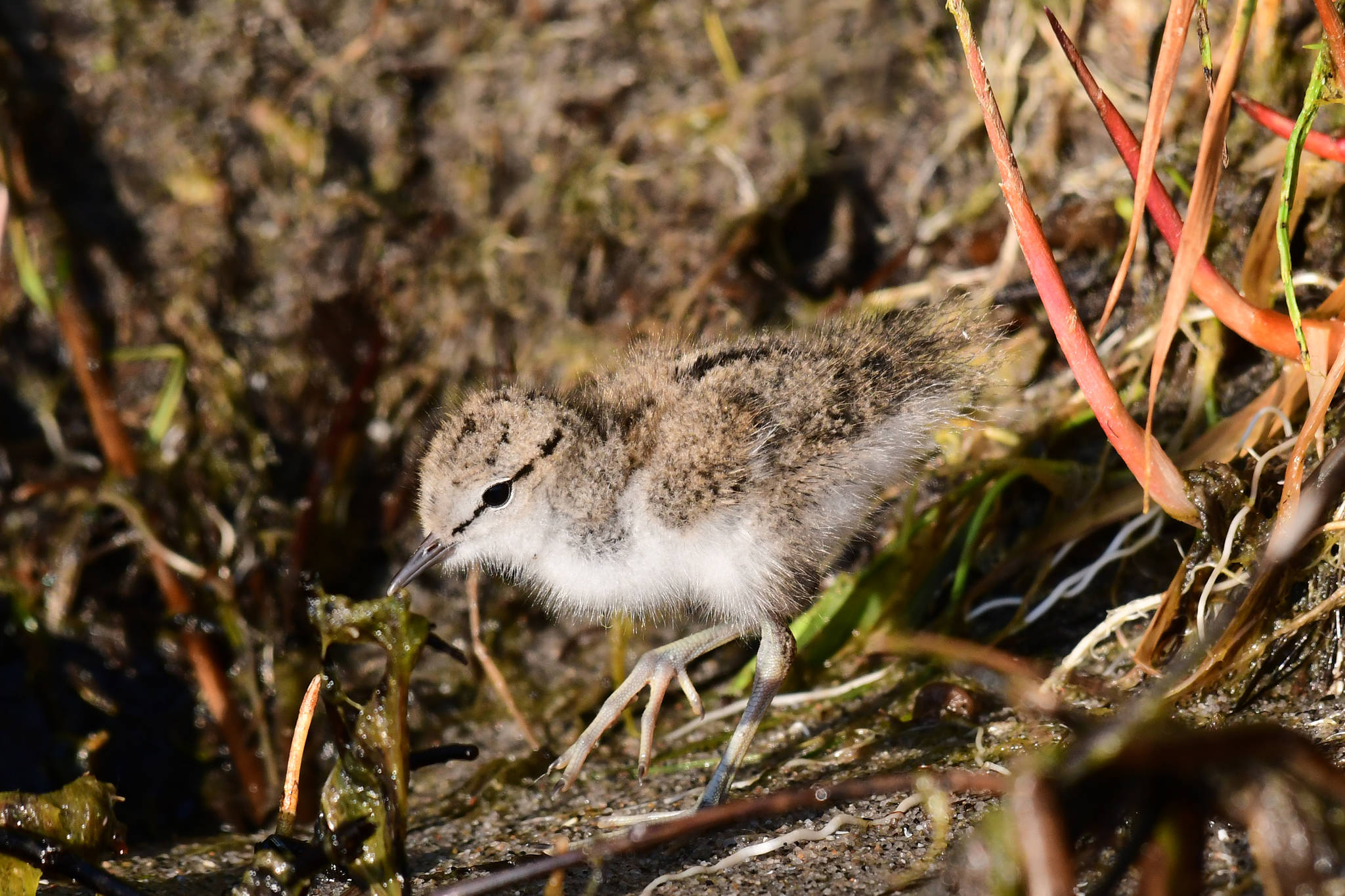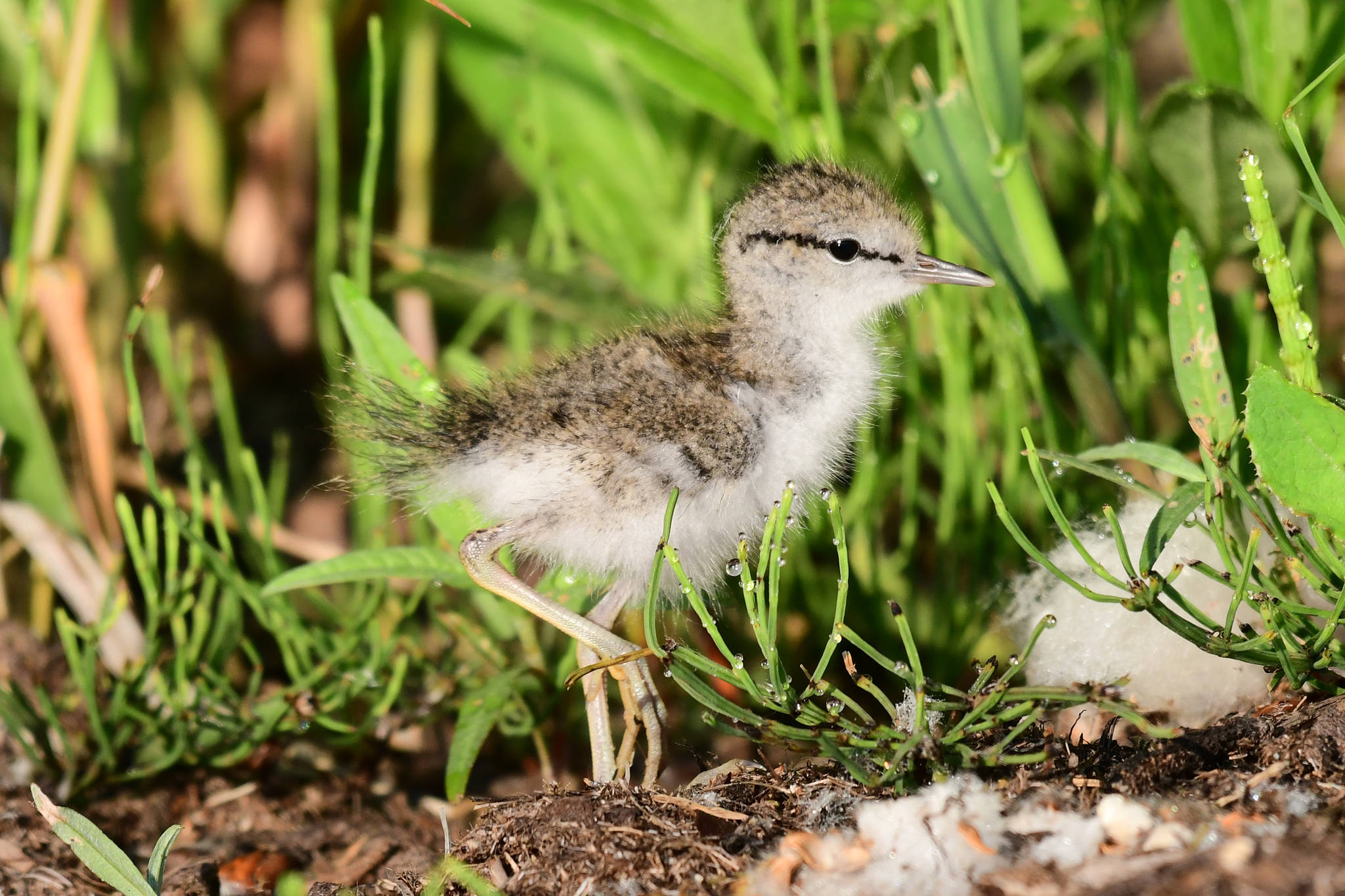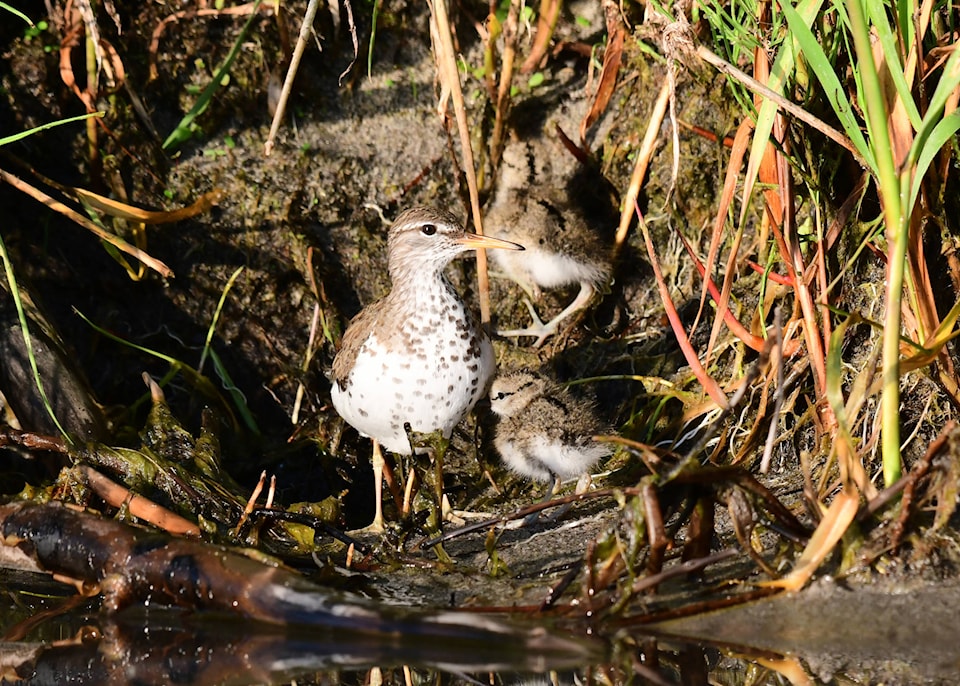On one of my early morning kayaks on Sylvan Lake in late June, I had an unexpected and wonderful wildlife encounter. It was one of those perfect summer mornings that I had the privilege of sharing with several families of ducks, a great blue heron, a bald eagle and many songbird species.
As I approached the west shoreline of the lake, I could see a pair of spotted sandpipers bobbing along a small stretch of beach. As I paddled closer, two little fluff balls suddenly materialized! The adults, alarmed by my approach, soon sent the young scurrying back into the thick shoreline grass. I noted the location and paddled on.
I returned to the same spot on my way back. This time, the adults – although aware of my presence – were not overly alarmed. I let the kayak drift closer and, with camera in hand, hoped to at least catch another glimpse of the young.
Suddenly, four tiny sandpipers emerged. Daintily tiptoeing on garishly long toes and bobbing their shaggy little tails, these precious creatures – oblivious of my presence – pecked and poked for their food, stretched, groomed, sipped dew drops from the undersides of leaves, and one even napped for a few moments.
After several glorious minutes, they retreated into the grass and disappeared. I backed away quietly and paddled home. What an “awe”some way to start a day!
Spotted sandpipers, unlike other hard-to-recognize shorebirds, can be easily identified by their spotted chests and teetering gait. The most widespread sandpiper on the continent, they can be found in most habitats as long it contains a stretch of shoreline, some semi-open habitat, and patches of dense vegetation.
Female spotted sandpipers have a unique breeding strategy: they arrive on territory earlier than the males in the spring, establish their own territories and – early in the breeding season – experience a surge in testosterone levels. This hormone increase may account for them being aggressive and, in some cases, polyandrous. Some females will mate with up to four males, which then incubate the eggs and care for the young. Amazingly, females can store sperm for up to a month and, because they have so many mates, the young in each clutch may have different fathers.
Since that wonderful early morning paddle, I have had the pleasure of many more kayak trips around central Alberta. Each trip has been enriched by encountering and watching these interesting and engaging little shorebirds.
Nature Alberta has published a helpful guide to shorebirds in Alberta. Find it on naturealberta.ca (hover under learn about nature, click on birds and find the shorebirds of Alberta guide).
Myrna is a retired biologist, and a keen nature writer and photographer. She has written several books, which can be ordered from myrnapearman.com. She can be reached at myrna@myrnapearman.com.
